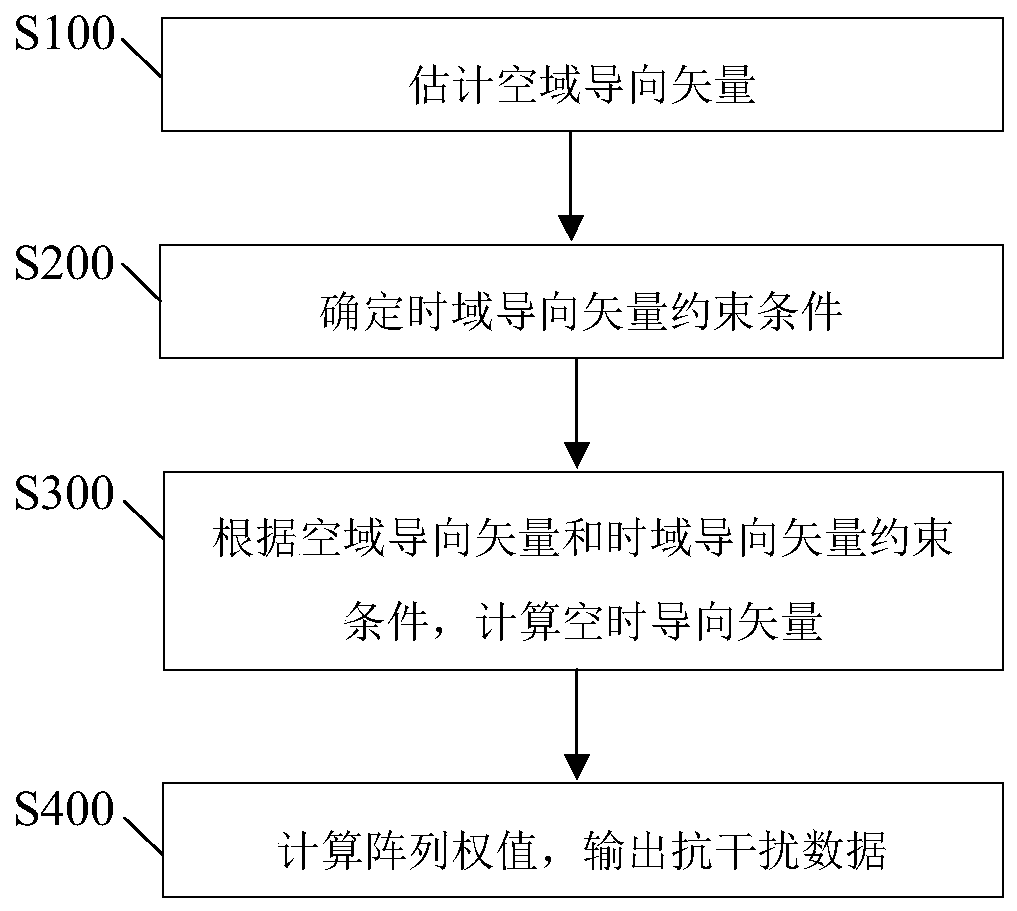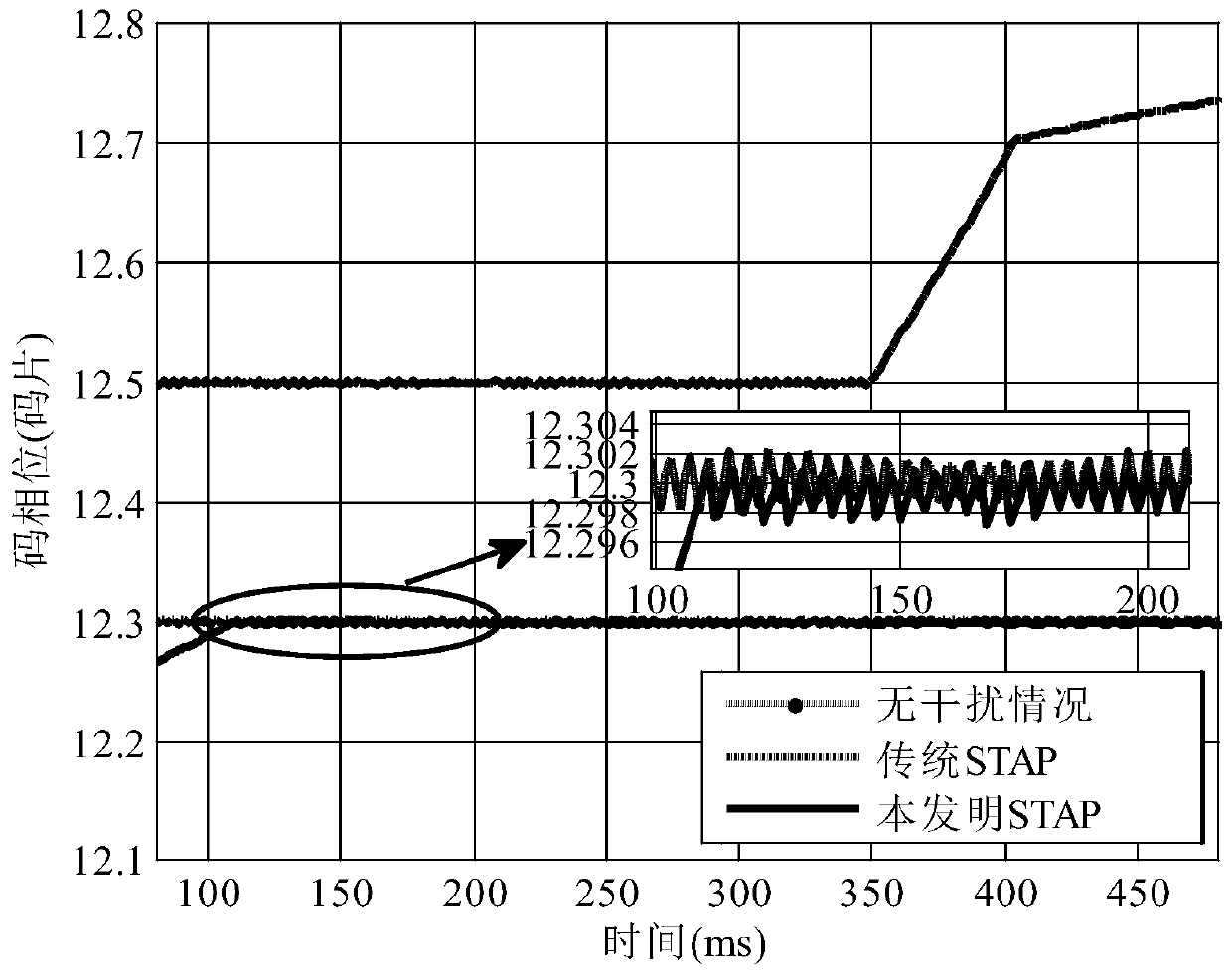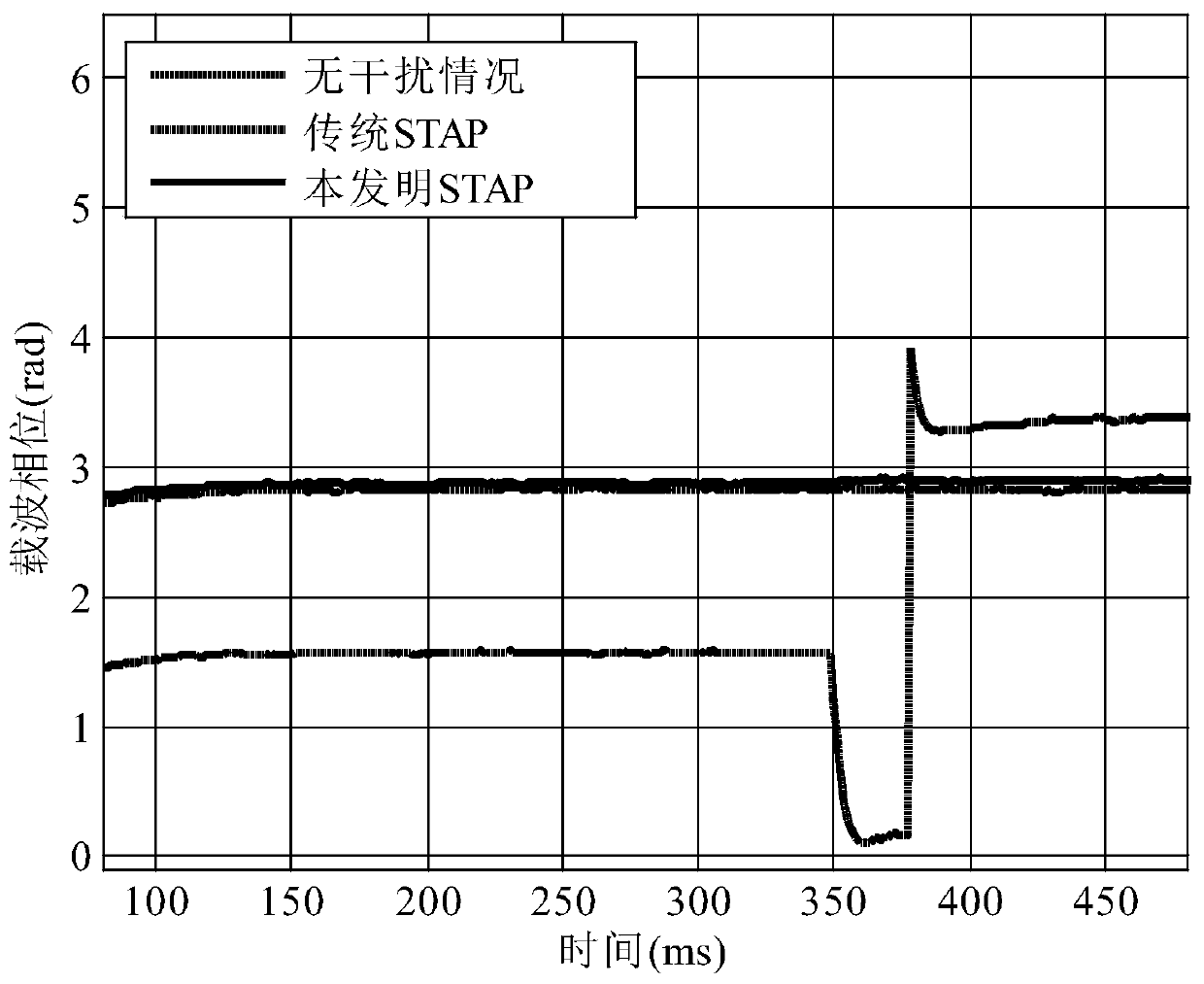An Adaptive Processor Based on GNSS Antenna Array Without Loss of Vacuum
A space-time self-adaptive, processor-based technology, applied to instruments, radio wave measurement systems, satellite radio beacon positioning systems, etc., can solve problems such as navigation signal pseudo code and carrier phase measurement deviation
- Summary
- Abstract
- Description
- Claims
- Application Information
AI Technical Summary
Problems solved by technology
Method used
Image
Examples
Embodiment Construction
[0036] In order to make the object, technical solution and advantages of the present invention more clear and definite, the present invention will be further described in detail below with reference to the accompanying drawings and examples. It should be understood that the specific embodiments described here are only used to explain the present invention, not to limit the present invention.
[0037] See figure 1 , figure 1 It is a flow chart of a preferred embodiment of the vacuum-free adaptive processor based on the GNSS antenna array of the present invention. Such as figure 1 As shown, the non-loss vacuum adaptive processor based on the GNSS antenna array according to the embodiment of the present invention includes a processor body and a memory connected to the processor body in communication, and the memory stores the wireless signal based on the GNSS antenna array. When the adaptive processing program is lost in vacuum, the adaptive processing program based on the GNS...
PUM
 Login to View More
Login to View More Abstract
Description
Claims
Application Information
 Login to View More
Login to View More - R&D
- Intellectual Property
- Life Sciences
- Materials
- Tech Scout
- Unparalleled Data Quality
- Higher Quality Content
- 60% Fewer Hallucinations
Browse by: Latest US Patents, China's latest patents, Technical Efficacy Thesaurus, Application Domain, Technology Topic, Popular Technical Reports.
© 2025 PatSnap. All rights reserved.Legal|Privacy policy|Modern Slavery Act Transparency Statement|Sitemap|About US| Contact US: help@patsnap.com



